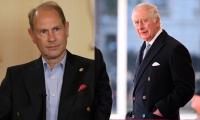KARACHI: The current account gap rises to $8.929 billion, or 3.2 percent, of gross domestic product in 11 months of the outgoing fiscal year, which is the highest level since 2008.
According to the State Bank of Pakistan (SBP) data released on Thursday, the current account was $3.217 billion in the 11 months during May last year. Pakistan ran a current account deficit of $1.581 billion in May alone as compared to $1.234 billion in April 2017.
“The government borrowed $1.846 billion from international creditors alone in May, which is almost 29 percent of the total borrowing in 11 months,” a senior economist said. “The rise sharp rise in the foreign loans is unbelievable. Moreover, a higher imports growth contributed to the worsening of the external current account.”
“Administrative measures, such as imposition of regulatory duty on some imported items and 100 percent cash margins on consumer and luxury imports have not been effective in curtailing a huge trade deficit,” the economist said.
Despite the high current account deficit, the SBP’s reserves increased to $16.415 billion in May 2017 against $16.1 billion in April 2017. Some analysts said the deficit number in May is the third highest in the history. In October 2008, the current account gap had touched $2.4 billion, while in November 2007 it reached $1.7 billion.
Imports surged 20.60 percent to $48.539 billion in July-May FY17 from $40.247 billion a year ago. However, exports fell to $18.541 billion as compared to $19.140 billion during the corresponding period of the last year.
The increase in forex reserves is attributed to short- and long-term loans and some rise in foreign direct investment. Economists expect the current account gap to reach 3.3 to 3.5 percent of GDP by the end of this fiscal year.
“The deficit is likely to rise to $12 billion in the next fiscal year, while the SBP’s reserves could drop to around $8 billion from the current level of $15.3 billion,” the economist added. Zeeshan Afzal, an analyst at Insight Securities says meeting the current account deficit through new loans was difficult, as deficit in FY18 is expected to cross $11 billion.
The worse-than-expected deficit also adds pressure to the government’s financing capacity of external debt and liabilities. The precarious foreign exchange position could dent the exchange rate.
“In the scenario of falling reserves, we cannot rule out rupee depreciation and monetary tightening in the next few months.” Afzal said.
Some analysts foresee a 25-30 percent weaker rupee in FY18. It is believed that the country's high deficit on both current and fiscal accounts is unlikely to push the government to devalue domestic currency and hike in interest rates at least during 2017 due to general elections next year.
All decisions will be deferred till the new government takes office, they added. The IMF, in its latest report, predicted that the account deficit has widened and is expected at 3 percent of GDP in 2016/17, driven by quickly rising imports of capital goods and energy. Foreign exchange reserves have declined in the context of a stable rupee/dollar exchange rate.
“Monetary policy has been appropriately accommodative, and urged the SBP to remain vigilant and be ready to tighten it in case inflationary pressures emerge or foreign exchange market pressures intensify,” it stated.
“Directors called on the authorities to allow for greater exchange rate flexibility—rather than relying on administrative measures — to help reduce external imbalances and bolster external buffers. In this regard, they welcomed the authorities’ commitment to remove, within one year, the cash margin requirement for imports of consumer goods, which constitutes an exchange restriction and multiple currency practice,” the report added.
In this picture, the PCJCCI logo can be seen on September 1, 2022. — Facebook/Pakistan China Joint Chamber of...
A representational image of a US flag pictured alongside a street sign reading "Wall Street" in the New York city. —...
A security guard sits in front of a wall with signs and slogans at the operation building at the Pakistan Steel Mills ...
A worker cleans the entrance to the headquarters of Bank Indonesia, the nation's central bank, in Jakarta, Indonesia....
The MCB's logo is seen on a wall outside the bank's head office. — MCB websiteKARACHI: MCB Bank Limited on...
A foreign currency dealer counts US dollars at a shop in Karachi. — AFP/FileKARACHI: The rupee lost ground against...







